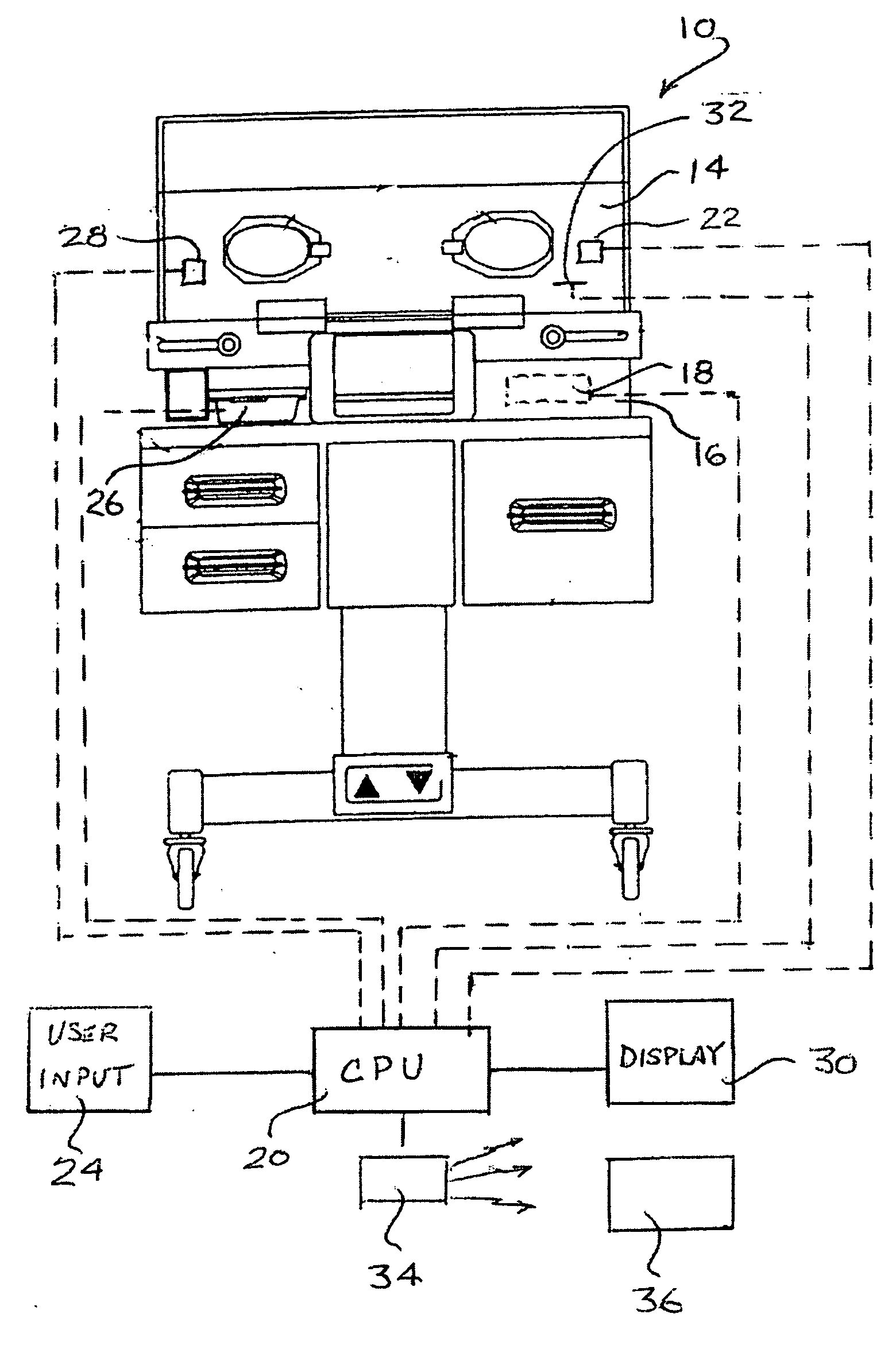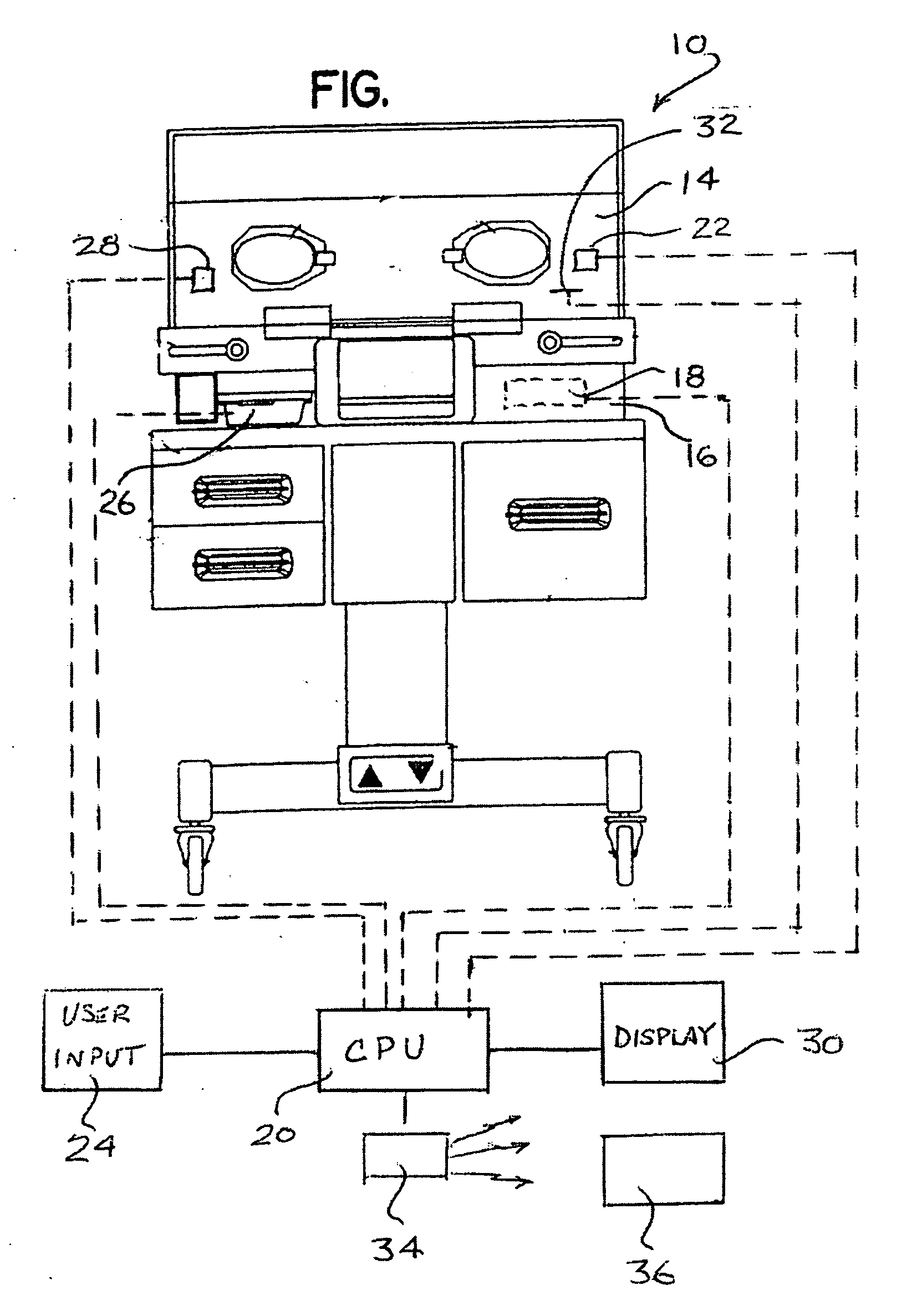Humidification control system for infant care apparatus
- Summary
- Abstract
- Description
- Claims
- Application Information
AI Technical Summary
Benefits of technology
Problems solved by technology
Method used
Image
Examples
Embodiment Construction
[0022] Referring now to the Figure, there is shown an infant care apparatus 10 having an infant platform 12 that is adapted to underlie and support an infant being cared for therein. The infant is basically enclosed within an infant compartment 14 that surrounds the infant and the atmosphere within the infant compartment 14 is controlled for the wellbeing of the infant by controlling the heat and humidly therein.
[0023] In order to heat the infant compartment 14, there is a heating system that can be located in a heater compartment 16 located beneath the infant compartment 14. There is, therefore, a electrical heater 18 that is used to heat a flow of air to be introduced as warmed air into the infant compartment to provide warmth to the infant enclosed within the infant compartment 14. A typical infant care apparatus 10 is shown and described in U.S. Pat. No. 4,936,824 of Koch et al as an infant incubator and the heating system of the present invention can be of the convective type ...
PUM
 Login to View More
Login to View More Abstract
Description
Claims
Application Information
 Login to View More
Login to View More - R&D
- Intellectual Property
- Life Sciences
- Materials
- Tech Scout
- Unparalleled Data Quality
- Higher Quality Content
- 60% Fewer Hallucinations
Browse by: Latest US Patents, China's latest patents, Technical Efficacy Thesaurus, Application Domain, Technology Topic, Popular Technical Reports.
© 2025 PatSnap. All rights reserved.Legal|Privacy policy|Modern Slavery Act Transparency Statement|Sitemap|About US| Contact US: help@patsnap.com


